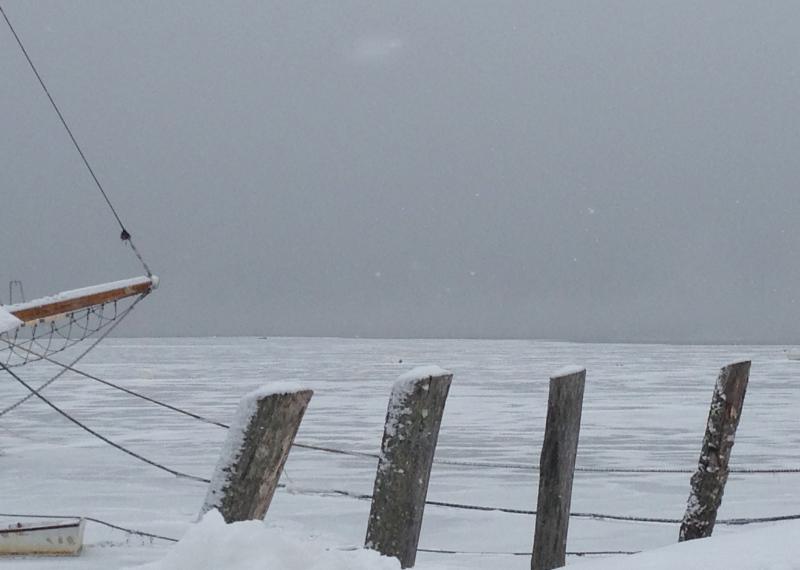Extreme cold settles into the area: Tips for coping with the weather
Camden’s Fire Chief and Emergency Management Director Chris Farley circulated the following late Thursday afternoon, Jan. 2, as temperatures fell below zero and snow made driving dangerous. With such extreme cold in the forecast, hazards run high for humans and animals.
1. REMAIN UPDATED: Closely monitor local news reports for updates on weather forecasts and storm impacts. Blizzard warning in Midcoast until 10 a.m. Friday
2. EMERGENCY SUPPLY KIT: Make sure you have a well-stocked Winter Home Emergency Supply Kit that includes flashlights, portable radio, extra batteries, a first aid kit, bottled water, non-perishable food and manual can opener.
3. OUTDOOR ACTIVITIES: Minimize outside activities, particularly the elderly and very young and remember to consider your pets.
4. PETS: Ensure your pet(s) are closely monitored when outside and are returned to a warm environment ASAP. DO NOT leave them outside for extended periods of time.
5. CLOTHING: Dress in several layers of loose-fitting, lightweight clothing, rather than a single layer of heavy clothing. Outer garments should be tightly woven and water repellent. Wear a hat, mittens and sturdy waterproof boots, protecting your extremities. Cover your mouth with a scarf to protect your lungs.
6. FROSTBITE: Excessive exposure can lead to frostbite, which is damaging to body tissue that is frozen. Frostbite causes a loss of feeling and a pale appearance in extremities, such as fingers, toes, ear lobes or the tip of the nose. If symptoms are detected, seek medical help immediately.
7. HYPOTHERMIA: Hypothermia can occur in extreme cases. The warning signs are uncontrollable shivering, memory loss, disorientation, incoherence, slurred speech, drowsiness and apparent exhaustion. If the person’s temperature drops below 95 degrees, seek immediate medical care.
8. HEATING FUEL: Ensure you have sufficient heating fuel, as well as emergency heating equipment in case you lose electricity.
9. ALTERNATE HEATING SOURCES: When utilizing alternate heating sources, such as your fireplace, wood stove or space heater, take the necessary safety precautions. Keep a fire extinguisher handy; ensuring everyone knows how to use it properly. Test smoke alarms and Carbon Monoxide (CO) Detectors.
10. GENERATORS: If utilizing an emergency generator, read, understand and follow the manufacturer’s instructions. Always operate emergency generators outdoors and away from any open window. Make sure your generator is properly installed and grounded as you may be liable for damage or injury to other people and property that may result from improperly installed or operated equipment.
11. COOKING: Never use propane or charcoal grills indoors as they pose carbon monoxide (CO) and fire risks.
12. EXHAUST VENTS: Clear exhaust vents from Direct Vent Gas Furnace Systems to avoid carbon monoxide (CO) poisoning. Also, never run an automobile until the exhaust pipe has been cleared of snow. If you lose your heat, seal off unused rooms by stuffing towels in the cracks under the doors. At night, cover windows with extra blankets or sheets
13. BE A GOOD NEIGHBOR: Check with elderly or relatives and friends who may need additional assistance to ensure their safety.
14. TO KEEP PIPES FROM FREEZING: Wrap pipes them in insulation or layers of newspapers, covering the newspapers with plastic to keep out moisture. Allow a trickle of warm water to run from a faucet that is farthest from your water meter or one that has frozen in the past. This will keep the water moving so that it cannot freeze. Learn how to shut off your water if a pipe bursts.
15. IF PIPES FREEZE: Remove insulation, completely open all faucets and pour hot water over the pipes or wrap them with towels soaked in hot water, starting where they are most exposed to the cold. A hand-held hair dryer, used with caution, also works well.
16. MEDICAL EQUIPMENT: If you use medical equipment in your home that requires electricity, talk to your health care provider about how you can prepare for its use during a power outage. Ensure you have extra batteries for medical equipment and assistive devices.
17. LIFE-SUPPORT: If you have life-support devices that depend on electricity, contact your local electric company about your power needs for life-support devices (home dialysis, suction, breathing machines, etc.) in advance of an emergency. Some utility companies will put you on a "priority reconnection service" list. Talk to your equipment suppliers about your power options and let your local fire department know that you are dependent on life-support devices.
18. CAR WINTERIZATION: Make sure your car is properly winterized. Keep the gas tank at least half-full. Carry a Winter Emergency Car Kit in the trunk including blankets, extra clothing, flashlight with spare batteries, a can and waterproof matches (to melt snow for drinking water), non-perishable foods, windshields scraper, shovel, sand, towrope and jumper cables.
Links:
· CDC Extreme Cold: A Prevention Guide to Promote Your Personal Health and Safety.
· CDC Winter Weather Health and Safety Tips
· FEMA Winter Storms and Extreme Cold
























